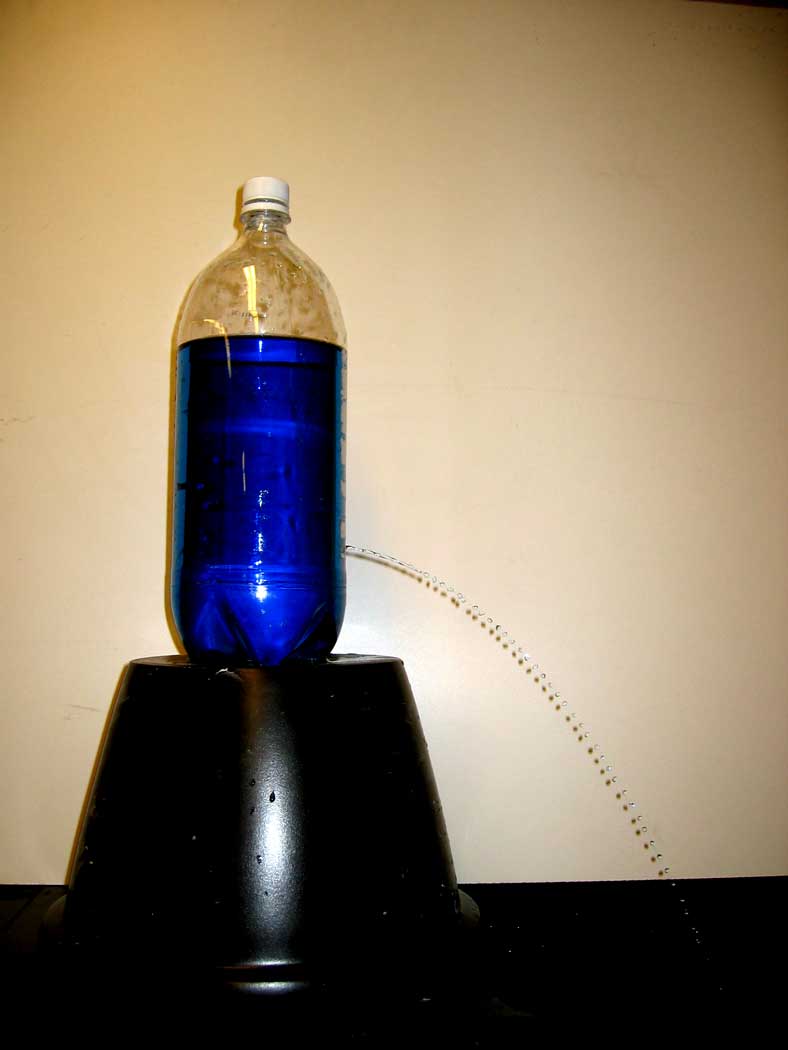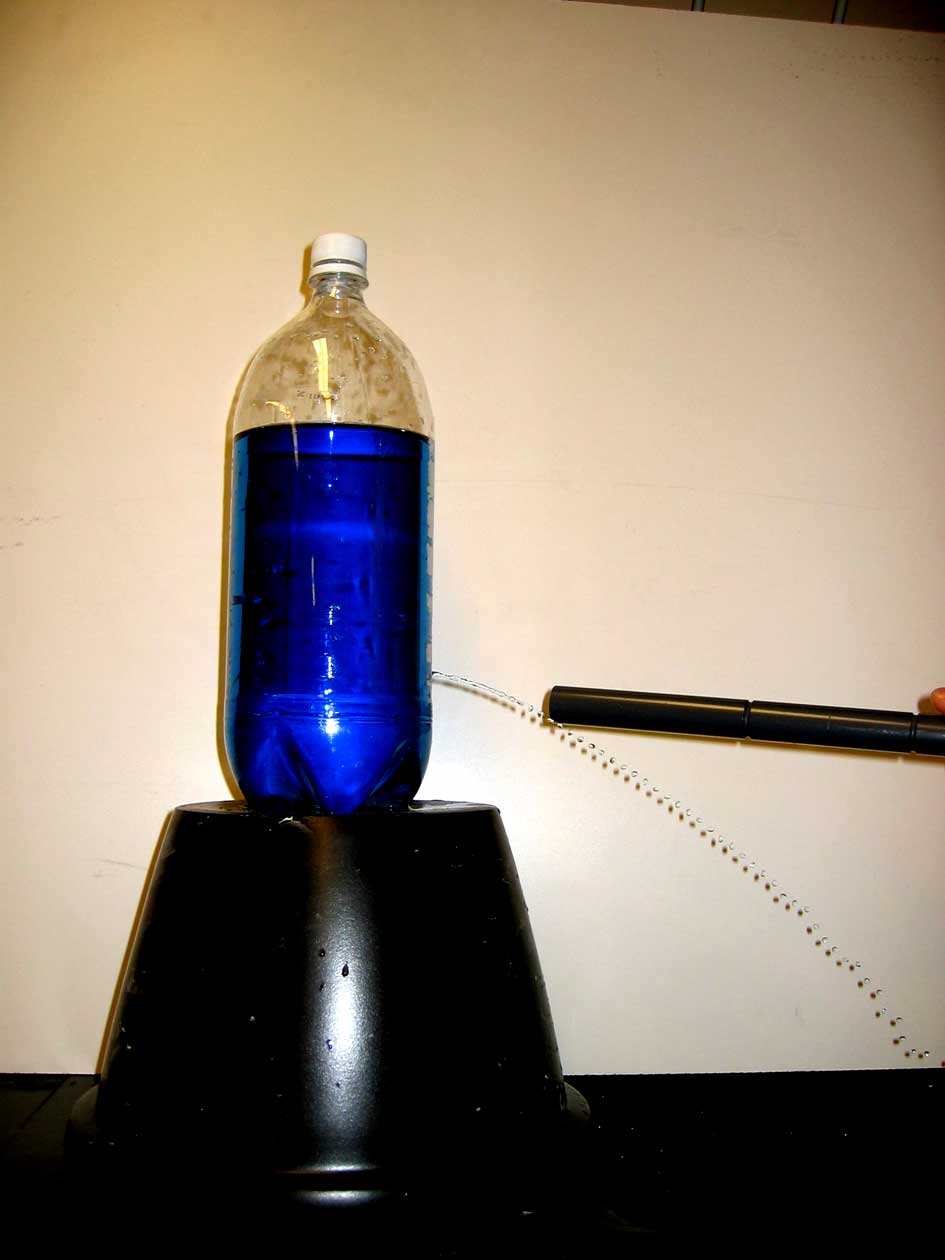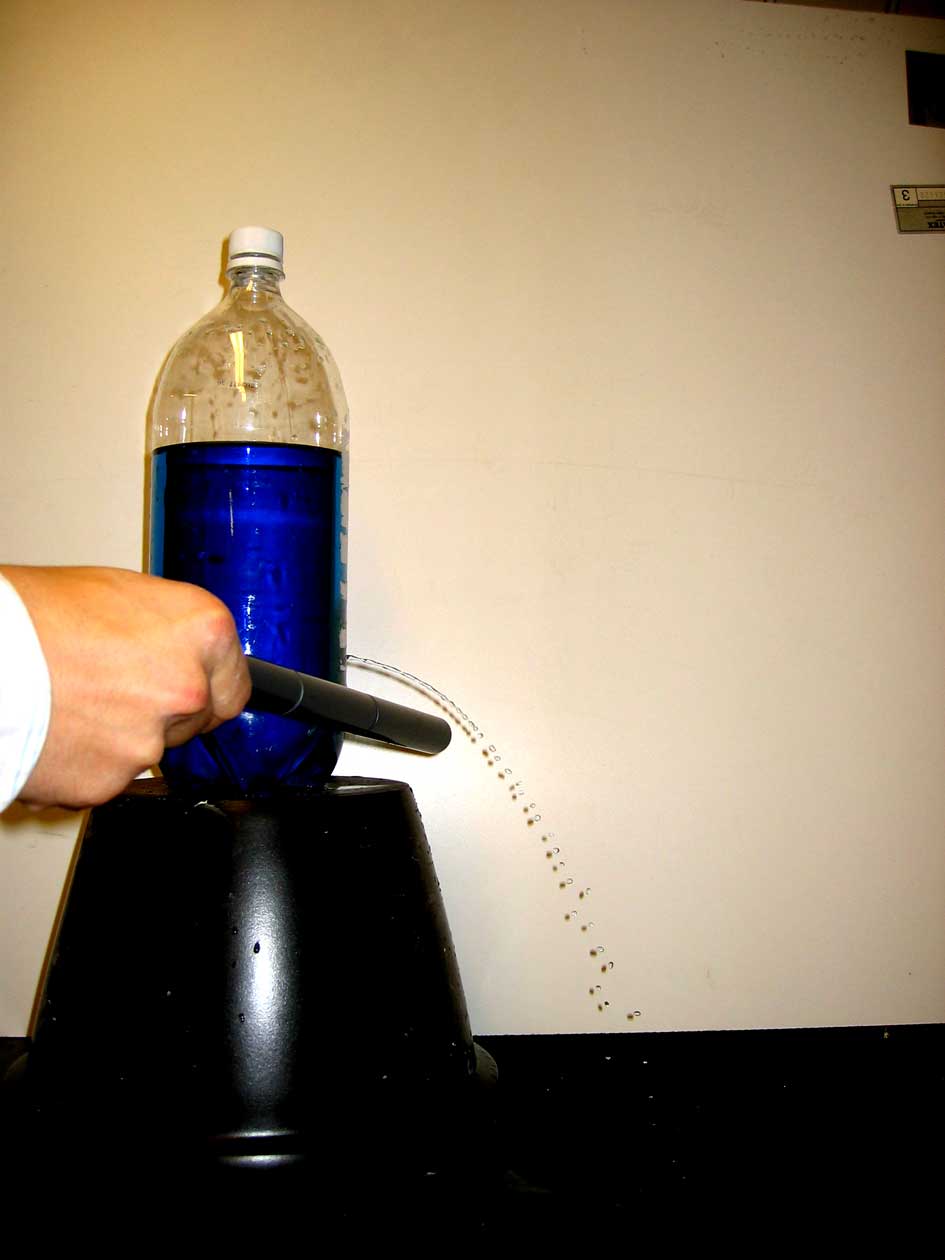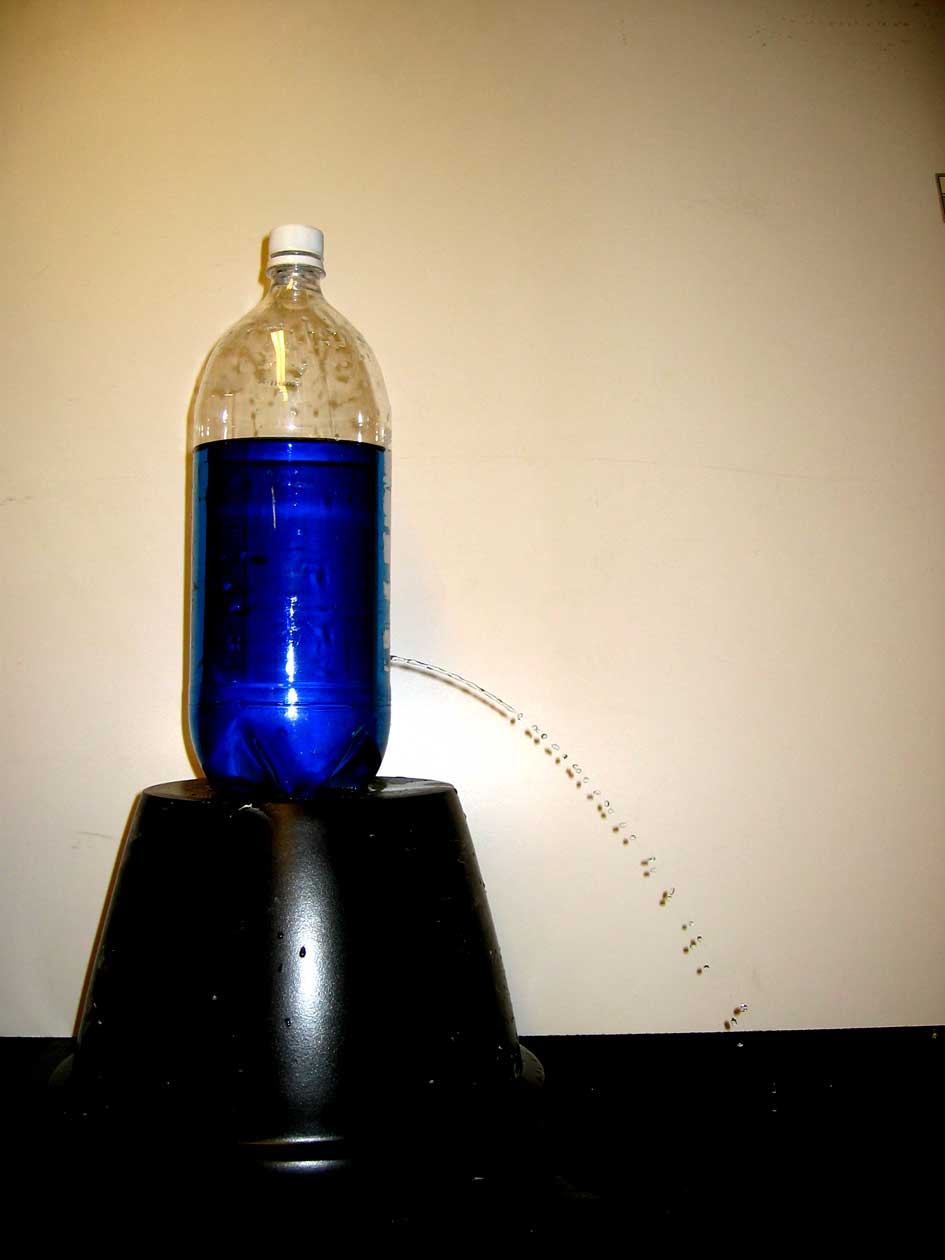Demonstrating the polarity of water

 A stream of water is magically redirected when subjected to the presence of a charged rod.
A stream of water is magically redirected when subjected to the presence of a charged rod.
Ingredients: water, plastic bottle, "fur" agitator, plastic rod, food coloring
Procedure: A minimal recipe follows.
1. Place colored water in bottle, opening a small hole near the bottle's bottom to create an arc of water droplets.
2. Charge a plastic rod using a piece of "fur" or the equivalent.
3. Bring the charged rod near, but not in contact with, the stream of water.
4. Observe the deflection of the water stream.
Understanding: Our experience with bulk water is that it is an excellent solvent of salts. That stands in contrast to oil, which is a poor solvent of salts. At the atomic level, we think of water as a dipolar molecule - electrically neutral with a separation of charge between the molecule's positively charged hydrogen end and the negatively charged oxygen end.

 How does a water molecule react to the presence of a charged ion? A water molecule is attracted to a negatively charged anion, orienting its dipole to bring its positively charged hydrogen-end closest to the anion. A water molecule is attracted to a positively charged cation, orienting its dipole to bring its negatively charged oxygen-end closest to the cation. In this way, water can effectively dissolve salts like sodium chloride, interacting favorably with both sodium cations and chloride anions.
How does a water molecule react to the presence of a charged ion? A water molecule is attracted to a negatively charged anion, orienting its dipole to bring its positively charged hydrogen-end closest to the anion. A water molecule is attracted to a positively charged cation, orienting its dipole to bring its negatively charged oxygen-end closest to the cation. In this way, water can effectively dissolve salts like sodium chloride, interacting favorably with both sodium cations and chloride anions.
In the droplets forming the stream of water, the same physics is played out on the bulk scale. The water droplets are attracted to the water stream. If the charged rod is held above the stream, the stream rises. If the charged rod is held below the stream, the stream is drawn down.
The reaction of the stream of water to the presence of the charged rod demonstrates the magical force between charged interactions, and how our reasoning about interactions at the atomic scale can be used to predict the behavior of bulk matter.
Picturing the aqueous solvation of cations and anions
Question: Draw a Lewis structure of a single water molecule interacting closely and favorably with a sodium ion. Draw a Lewis structure of a single water molecule interacting favorably with a single chloride ion.In dilute aqueous solution, sodium is found to have six water molecules in its first solvation shell. Draw a Lewis structure of six water molecules interacting favorably with a sodium ion. What is the geometry of the arrangement of water molecules surrounding the sodium ion?